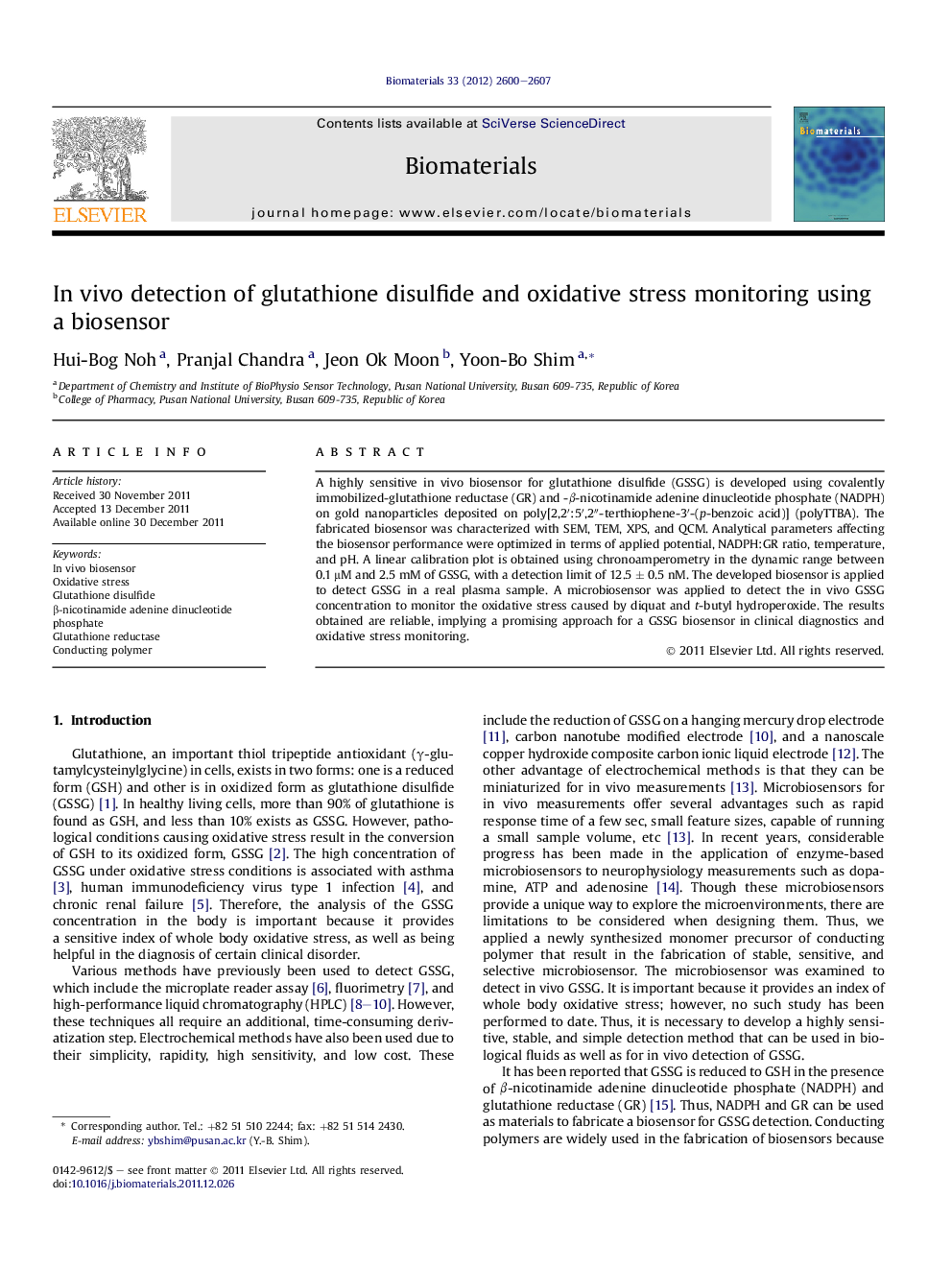| Article ID | Journal | Published Year | Pages | File Type |
|---|---|---|---|---|
| 10229384 | Biomaterials | 2012 | 8 Pages |
Abstract
A highly sensitive in vivo biosensor for glutathione disulfide (GSSG) is developed using covalently immobilized-glutathione reductase (GR) and -β-nicotinamide adenine dinucleotide phosphate (NADPH) on gold nanoparticles deposited on poly[2,2â²:5â²,2â³-terthiophene-3â²-(p-benzoic acid)] (polyTTBA). The fabricated biosensor was characterized with SEM, TEM, XPS, and QCM. Analytical parameters affecting the biosensor performance were optimized in terms of applied potential, NADPH:GR ratio, temperature, and pH. A linear calibration plot is obtained using chronoamperometry in the dynamic range between 0.1 μM and 2.5 mM of GSSG, with a detection limit of 12.5 ± 0.5 nM. The developed biosensor is applied to detect GSSG in a real plasma sample. A microbiosensor was applied to detect the in vivo GSSG concentration to monitor the oxidative stress caused by diquat and t-butyl hydroperoxide. The results obtained are reliable, implying a promising approach for a GSSG biosensor in clinical diagnostics and oxidative stress monitoring.
Keywords
Related Topics
Physical Sciences and Engineering
Chemical Engineering
Bioengineering
Authors
Hui-Bog Noh, Pranjal Chandra, Jeon Ok Moon, Yoon-Bo Shim,
